Global Health Helps Achieve the Unimaginable
Published on: April 01, 2025
“Alone we can do so little, together we can do so much” – Helen Keller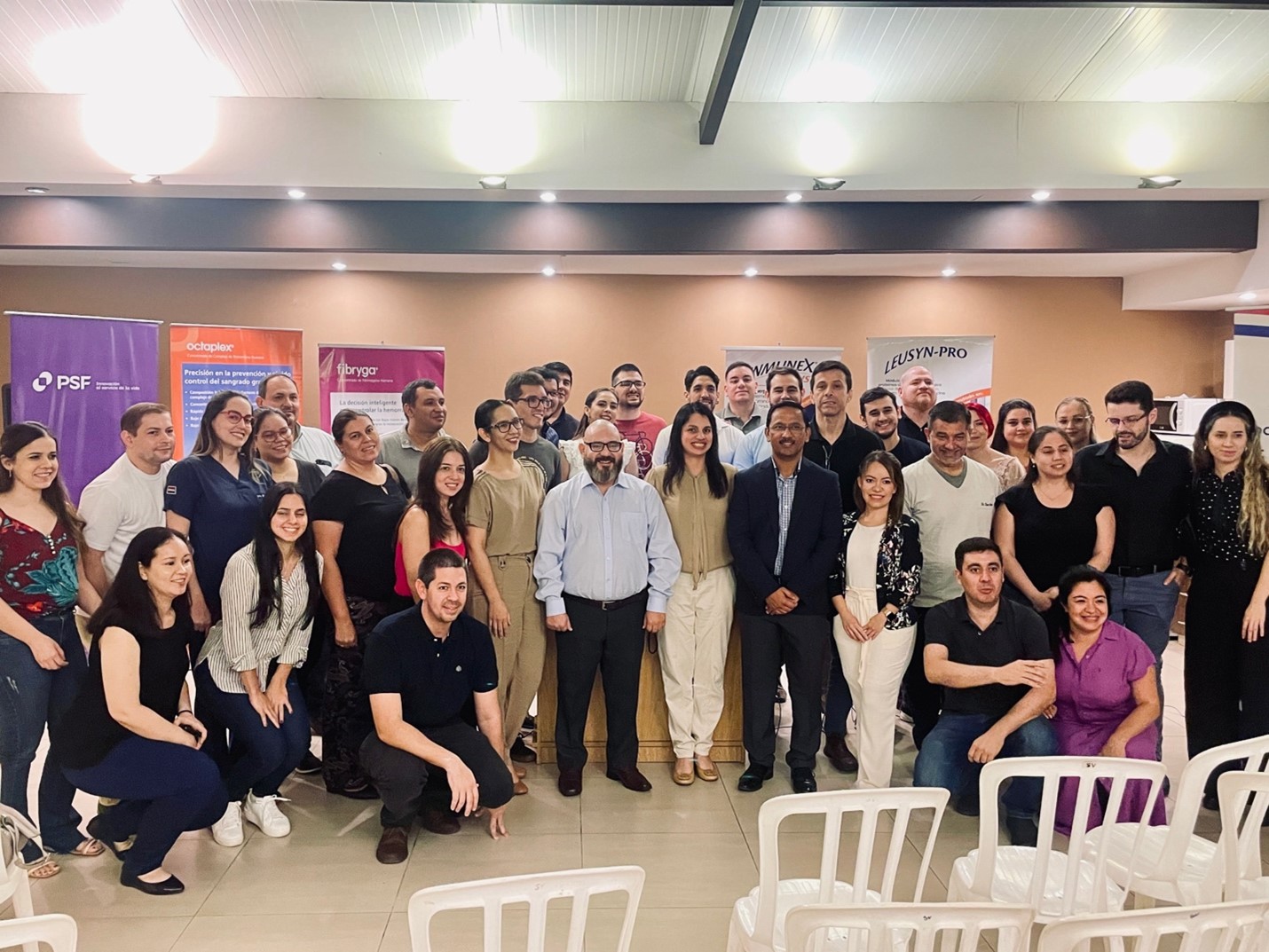
The power of a team that Helen Keller so famously described was the exact feeling we experienced this past spring during a medical mission at the Hospital Nacional de Itauguá in Paraguay. Organized with the Solidarity Bridge Neurosurgery and Neurology Institute, our multidisciplinary team consisted of neurosurgeons Dr. Richard Moser and Dr. Nirav Patel, neuro-anesthesiologists Dr. Grace Kim and Dr. Deepak Sharma, neurointensivist Dr. Lucia Rivera Lara, surgical technician Carlos Vazquez, team leader Lindsay Doucette, and team chaplain Mary Sanchez. Our host was Dr. Jose Kuzli, the Director of Neurosurgery and Neurology at Hospital Nacional de Itauguá, who welcomed our team and introduced us to the staff.
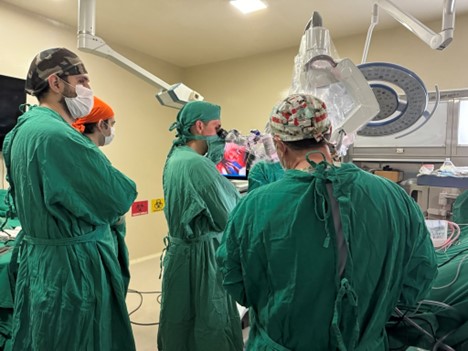
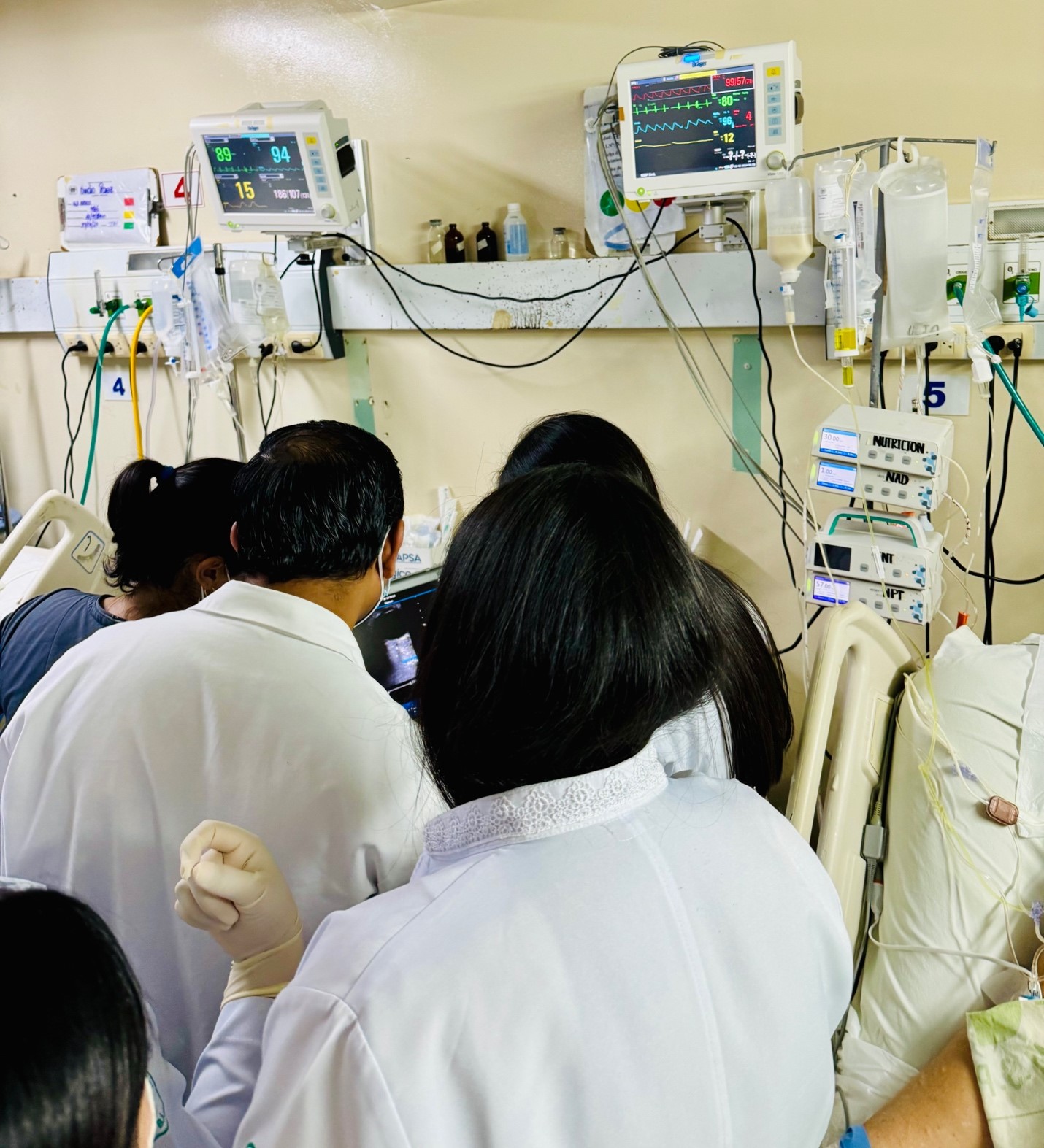 Our week-long stay at Hospital Nacional de Itauguá was full of momentous events. No fewer than six complex high-grade arteriovenous malformations (AVM) surgeries were performed by Dr. Kuzli and Dr. Patel. These surgeries might not have been possible without the guidance of Dr. Patel, a cerebrovascular neurosurgeon at Brigham and Women’s Hospital in Boston, MA, and the rest of the team. Dr. Sharma and Dr. Rivera Lara gave daily lectures on stroke and neurocritical care to residents, fellows, and attendings, with additional lectures at conferences for regional neurosurgery and critical care societies. Dr. Sharma and Dr. Rivera Lara also conducted daily neurocritical care rounds with trainees, as well as multiple hands-on training sessions on transcranial Doppler and optic nerve sheath ultrasound. Patients' families were extremely grateful for their care and the opportunity for their loved ones to undergo complex vascular neurosurgical procedures, and they shared many stories about their journeys to find access to neurosurgical care with Mary Sanchez and Dr. Richard Moser, who was the leader of the mission.
Our week-long stay at Hospital Nacional de Itauguá was full of momentous events. No fewer than six complex high-grade arteriovenous malformations (AVM) surgeries were performed by Dr. Kuzli and Dr. Patel. These surgeries might not have been possible without the guidance of Dr. Patel, a cerebrovascular neurosurgeon at Brigham and Women’s Hospital in Boston, MA, and the rest of the team. Dr. Sharma and Dr. Rivera Lara gave daily lectures on stroke and neurocritical care to residents, fellows, and attendings, with additional lectures at conferences for regional neurosurgery and critical care societies. Dr. Sharma and Dr. Rivera Lara also conducted daily neurocritical care rounds with trainees, as well as multiple hands-on training sessions on transcranial Doppler and optic nerve sheath ultrasound. Patients' families were extremely grateful for their care and the opportunity for their loved ones to undergo complex vascular neurosurgical procedures, and they shared many stories about their journeys to find access to neurosurgical care with Mary Sanchez and Dr. Richard Moser, who was the leader of the mission.
“Before this program started, these types of complex AVM cases were sent to other countries to get done,” Dr. Kuzli said. “This program has allowed for significant growth in vascular neurosurgery, not only through improvements in surgical technique but also with equipment donations. We saw our outcomes further improve after the multidisciplinary collaboration with neuro-anesthesiologists Dr. Kim (from Brigham and Women’s Hospital in Boston, MA) and Dr. Sharma (from the University of Washington in Seattle, WA). Dr. Kim and Dr. Sharma left their fingerprint of excellence with our anesthesiologists. Furthermore, given that we do not have expertise in neurocritical care, we invited Dr. Lucia Rivera Lara (from Stanford University in Palo Alto, CA) to give neurocritical care conferences and neurocritical care rounds with training in neuromonitoring. This created a spark in young physicians who are eager to learn more. This project has had a great impact on our trainees and their future. I hope it continues to grow, and I hope the team—neurosurgery, neuroanesthesia, and neurology—comes to Paraguay more often, at least twice a year.”
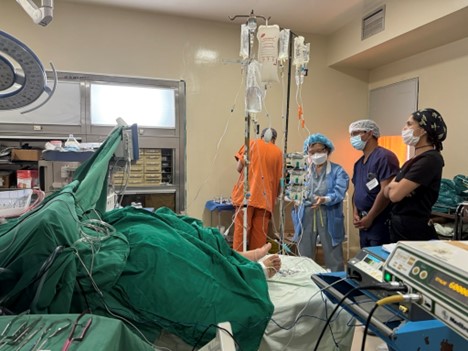
There was widespread agreement with the positive impact of the program. “I felt overjoyed to share my knowledge in neurology and neurocritical care,” Dr.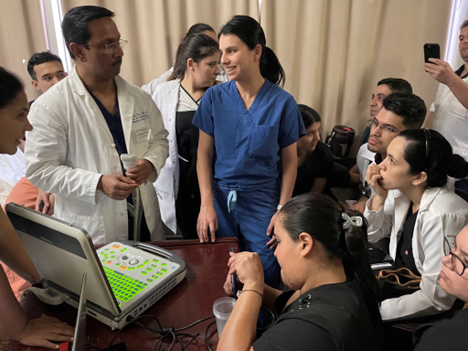 Rivera Lara added, “as well as very privileged to have the opportunity to learn from and share ideas with a group of very compassionate, smart, and driven doctors from Paraguay. They all wanted to learn as much as possible; they came to daily lectures even on holidays, asked questions, and stayed late. They truly wanted to help their patients, even though they understood that their capabilities are limited by the lack of resources such as medicines, imaging, infrastructure, and staff. For example, for the management of blood pressure in acute hemorrhagic stroke, they do not have access to labetalol or nicardipine drips; they have to use nitroglycerine or nitroprusside instead. For the management of acute stroke, they have alteplase but do not have access to thrombectomy or perfusion imaging. Sometimes, even getting a computed tomography angiography (CTA) scan is not possible. It makes you really appreciate the huge opportunity we have to treat our patients with the best medications and latest technology and, more importantly, work harder to overcome global health disparities.”
Rivera Lara added, “as well as very privileged to have the opportunity to learn from and share ideas with a group of very compassionate, smart, and driven doctors from Paraguay. They all wanted to learn as much as possible; they came to daily lectures even on holidays, asked questions, and stayed late. They truly wanted to help their patients, even though they understood that their capabilities are limited by the lack of resources such as medicines, imaging, infrastructure, and staff. For example, for the management of blood pressure in acute hemorrhagic stroke, they do not have access to labetalol or nicardipine drips; they have to use nitroglycerine or nitroprusside instead. For the management of acute stroke, they have alteplase but do not have access to thrombectomy or perfusion imaging. Sometimes, even getting a computed tomography angiography (CTA) scan is not possible. It makes you really appreciate the huge opportunity we have to treat our patients with the best medications and latest technology and, more importantly, work harder to overcome global health disparities.”
Why Get Involved in Global Health?
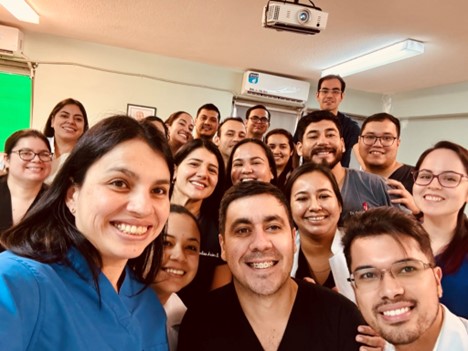 Neurological disorders are the leading cause of mortality and disability worldwide, which emphasizes the enormous public health impact of these conditions (1). Disability associated with neurological disorders is disproportionately higher in lower- and middle-income countries, not only due to limitations in treatment and rehabilitation but also due to limited access to specialized care. This gap in access calls for an army of neurologists, neurointensivists, neurosurgeons, neuroanesthesiologists, pharmacists, nurses, and philanthropists to work together to identify effective approaches for the prevention, treatment, and rehabilitation of neurological disorders worldwide. After all, as Helen Keller said, together we can do so much—so let us all work together to overcome global health disparities.
Neurological disorders are the leading cause of mortality and disability worldwide, which emphasizes the enormous public health impact of these conditions (1). Disability associated with neurological disorders is disproportionately higher in lower- and middle-income countries, not only due to limitations in treatment and rehabilitation but also due to limited access to specialized care. This gap in access calls for an army of neurologists, neurointensivists, neurosurgeons, neuroanesthesiologists, pharmacists, nurses, and philanthropists to work together to identify effective approaches for the prevention, treatment, and rehabilitation of neurological disorders worldwide. After all, as Helen Keller said, together we can do so much—so let us all work together to overcome global health disparities.
References
1. Global, regional, and national burden of disorders affecting the nervous system, 1990-2021: a systematic analysis for the Global Burden of Disease Study 2021. Lancet Neurol. 2024;23(4):344-81.
Author Affiliations
1. Department of Neurology, Division of Neurocritical Care, Stanford University, Palo Alto, CA, USA.
2. Department of Neurosurgery, Hospital Nacional de Itauguá, Paraguay.